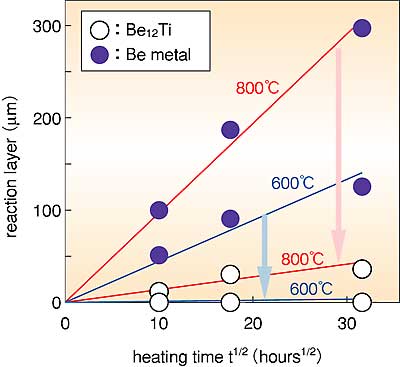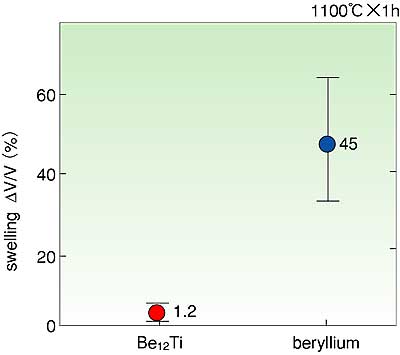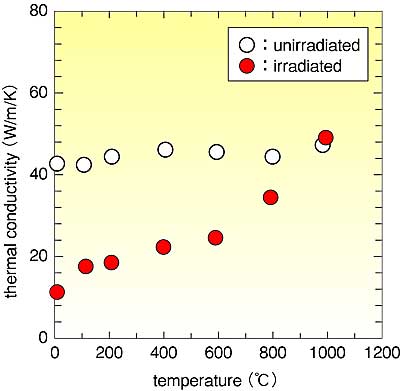Metallic beryllium has been studied for use as a neutron multiplier for fusion reactors. These studies show that metallic beryllium has significant material faults at high temperatures (600-900degree Celsius), where high-efficiency electricity generation is possible. Swelling of beryllium at these temperatures is a serious problem as it may damage a container surrounding the beryllium.
To minimize these faults, we have examined beryllium compounds such as Be12Ti, Be12V, and Be12Mo and have conducted feasibility studies of the neutron multiplication ratio, the induced radiation activity, the fabricability, etc, of these metals. Be12Ti was further studied in detail because it has superior fabricability when compared with metallic beryllium.
Compatibility of Be12Ti with a SUS316LN container material was tested. The results were satisfactory; that is, the thickness of reaction layer between both materials at around 800degree Celsius was about 1/10 of that between metallic beryllium and SUS316LN. The swelling rate was measured on a Be12Ti specimen at 1100degree Celsius following irradiation in JMTR to a neutron fluence of 5x1020 n/cm2 (E>1 MeV) at 500degree Celsius. The swelling rate was only about 1/40 of that of metallic beryllium. Additionally, the thermal conductivity of Be12Ti was measured. The results showed that the irradiation-induced conductivity decrease recovers somewhat by high-temperature annealing. The resulting thermal conductivity is satisfactory in the temperature range of 600-900degree Celsius.
These results confirm that Be12Ti has the necessary physical characteristics as a neutron multiplier material for a power generating fusion reactor.
The fabrication technology of small spheres of Be12Ti will now be addressed to allow the practical use of this material as a neutron multiplier for a power generating fusion reactor. |


